NEWS
IROAST Researchers - Distinguished Professor Dmitri Aleks Molodov
English Japanese
Unveiling the Intricacies of Metal Materials:
Exploring Microstructures and Interface Properties
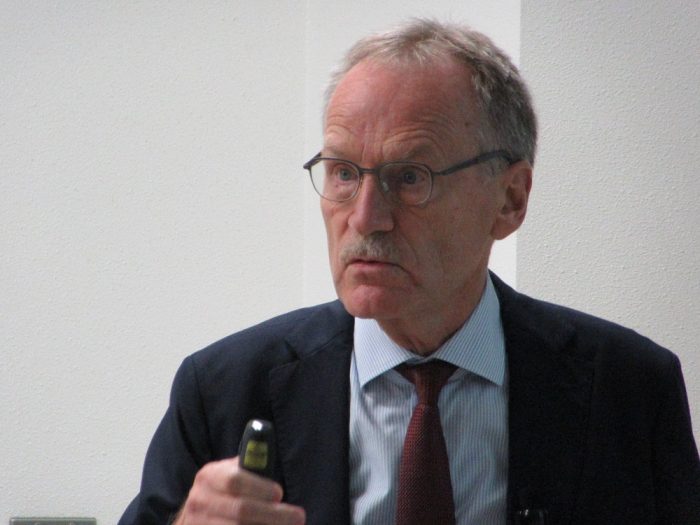
Distinguished Professor Dmitri Aleks MOLODOV
International Research Organization for Advanced Science and Technology (IROAST)
Faculty of Georesources and Materials Engineering, RWTH Aachen University (Germany)
For more than 20 years, Distinguished Professor Dmitri Aleks Molodov has established research exchanges with Professor Sadahiro Tsurekawa of the Faculty of Advanced Science and Technology, Kumamoto University. Starting from October 2016, he has served as a visiting professor at IROAST, and since November 2021, he has held the position of distinguished professor. In these roles, he actively participates in international collaborative research projects with researchers from Kumamoto University, delivers special lectures at international symposia and seminars, and engages in research discussions with graduate students. Furthermore, as a member of the IROAST International Advisory Board Committee, he plays an important role in IROAST by providing recommendations on IROAST initiatives and achievements from an international perspective.
* This article is based on a written interview in English.
■ Exploration of Microstructure: Through Characterization, Control, and Fundamental Studies
Q: Please tell us about your research.
Molodov: My research is mainly in the areas of characterization and control of microstructure evolution in metals and alloys, thermodynamics and kinetics of interfaces in crystalline solids, and crystal plasticity. In metallic materials, important microstructural changes are introduced by plastic deformation and heat treatment subsequent to plastic deformation. By these processes, the defect density and orientation distribution of grains are greatly affected, which in turn effectively changes the material properties. In a number of projects, we, therefore, investigated microstructure and texture evolution in the course of deformation, recrystallization and grain growth in different metallic materials, pure metals and alloys, such as aluminium alloys, iron alloys, e.g. heat-resistant steels and high-strength TWIP and TRIP steels.
In conducting this research, we have focused in parallel on the fundamental issues, keeping in mind that the fundamental process of microstructure evolution is the motion of grain boundaries, by which the crystalline solid is reconstructed atom by atom. As is now well known, there is a wide variety of structurally different boundaries in polycrystalline solids, which have different properties, in particular different kinetic properties, and respond very differently to applied forces. A focus of my group in Aachen was therefore to study, both experimentally and by atomistic computer simulations, grain boundary dynamics, i.e. the response of the grain boundary to an applied driving force; the grain boundary motion, its mechanisms and its dependence on grain boundary structure, chemistry and microstructure of the material. An important point here is the following: since there is no average representative grain boundary in a crystalline solid, grain boundary properties are best measured on specific individual grain boundaries in specially grown bicrystals. This is the basis of the approach we use in our studies. Thus, over the past few decades, we performed numerous experiments and simulations on fundamental aspects of grain boundary behavior. Among other things, a special laboratory for the investigation of grain boundary properties has been established, which uses unique measurement methods and techniques.
Q: Why did you start this research?
Molodov: While still being a student, I was fascinated by the grain microstructure of crystalline solids and its ability to be modified/engineered. In the course of further training, I became interested in the application and also the development of experimental techniques for its characterization, as well as in determining the relationships between the properties of interfaces and their structure. So when, after a couple of postdoctoral positions and fellowships, I was offered the opportunity to focus on research in this area, I was glad to take it.
Q: What are the expected outcomes of your research in the future?
Molodov: In my understanding and experience, the properties of metallic/crystalline materials are much less determined by the overall chemical composition of the material than by its microstructure, i.e. the spatial distribution of elements, phases, defects and orientations. Therefore, controlling the evolution of the microstructure offers both an improvement in material behavior in service and the possibility of creating materials with desired (or better, specified) properties. Thus, I would see the establishment of reliable approaches to comprehensively control the evolution of the microstructure of crystalline materials as an outcome of our research.
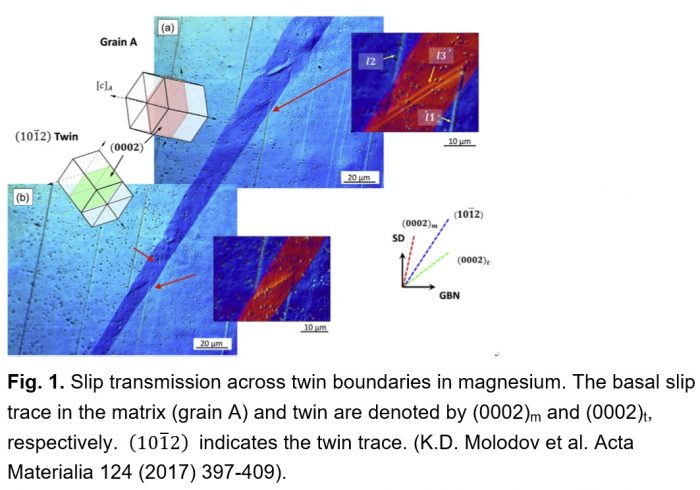

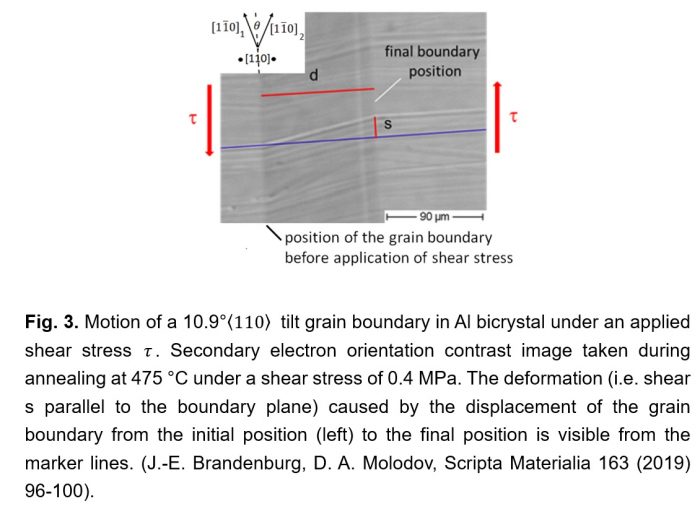
■ Forging My Path: From Family Influence to Research Passion in Metallurgy
Q: When and why did you decide to become a researcher?
Molodov: One of the reasons for later deciding to become a researcher was actually in the family, as my father was a doctor of chemical engineering. Furthermore, I was trained in metallurgy and metal physics by excellent teachers and outstanding scientists who sparked my genuine interest in research work. So, the decision to pursue an academic career was made just before graduation. Important also in this was the fact that at that time the academic environment was the most liberal and free-thinking part of the society I was in at that time, and this was the community I wanted to join.
I have been involved in research ever since I was a student to gain new knowledge about the underlying mechanisms and/or to establish relationships between phenomena and their causes and to share it with the community. In recent decades, also had the opportunity to share knowledge and experience with young researchers.
Q: What is your impression of Kumamoto?
Molodov: I really enjoy coming to Kumamoto, primarily of course because of the fruitful scientific and friendly relationship with my host Prof. Tsurekawa, but also because Kumamoto is a very lovely place, with a number of historical and cultural attractions, most of which I have already visited more than once. I find Kumamoto with its well-developed infrastructure and availability of everything needed in everyday life a nice city to work and live in. Also, to note that since I am coming from the rainy and windy corner of Europe, I enjoy also very much the nice, mostly sunny and warm weather in Kumamoto.
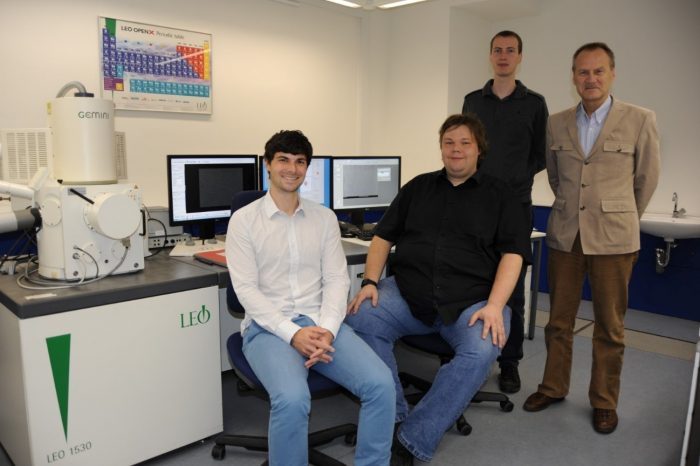
with members of the “Grain boundary dynamics” group at the Institute of Physical Metallurgy and Materials Physics of RWTH Aachen University
(left to right: Dr.-Ing. Christian Haase, Dr. rer. Nat. Jann-Erik Brandenburg, M.Sc. Marcel Schneider and Professor Dr. rer. nat. habil. Dmitri A. Molodov).
■ The key to Kumamoto University’s internationalization: IROAST network of distinguished professors and visiting professors
Q: What are your expectations for the future of IROAST?
Molodov: From my point of view, the effectiveness of the training and promotion of young researchers at Kumamoto University is, among other things, closely related to the further internationalization of research and teaching.
As I recommended at last year’s IROAST International Advisory Board Committee meeting, the connections that IROAST Distinguished Professors and Visiting Professors have will be key to the success of internationalization. Their active participation in supervising and mentoring graduate and doctoral students will contribute to the internationalization of research and education. For example, they participate in evaluation committees to assess the progress of master's and/or doctoral programs, and they actively participate in laboratory seminars of graduate students.
I would also suggest that IROAST visiting members be invited to give supplementary lectures in the existing courses of their host professors for both undergraduate and graduate students. This will provide young researchers and students with opportunities to gain diverse perspectives and knowledge and broaden the scope of their research.
An important element for the establishment of international research networks is the support of the research stays of young scientists in the scientific centers and partner universities abroad. I also believe that if IROAST use the connections of visiting professors to widely promote IROAST’s programs, such as tenure-track program, post-doctoral fellowship program, and internships, we can make a significant contribution to both the promotion of young researchers and the establishment of international research networks.
On the other hand, a focus of IROAST activities should continue to be the promotion and organization of international symposia and seminars at Kumamoto University. These events will play a major role as a forum for exchange in the academic world.
Q: What is your message for future researchers?
Molodov: From my perspective as an IROAST Distinguished Professor and a visiting member of IROAST, I would recommend students who are aspiring to a scientific career to get more involved in international scientific collaboration and networking. This not only provides further scientific experience and enhances communication skills, but also boosts self-confidence and brings joy and fun.
And one more thing. As a researcher, you will probably be paid less than an employer in a manufacturing industrial company. But in contrast, you will enjoy more freedom in organizing your working time and also more opportunities to make independent decisions. So, it depends on what you value more.
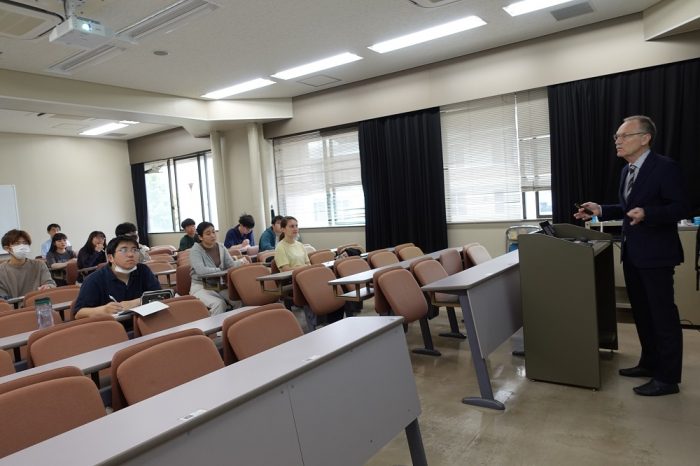
Distinguished Prof. Molodov gave two lectures on "Grain boundary migration" for graduate students in May 2023.
Related link
- IROAST Staff - Distinguished Professor

